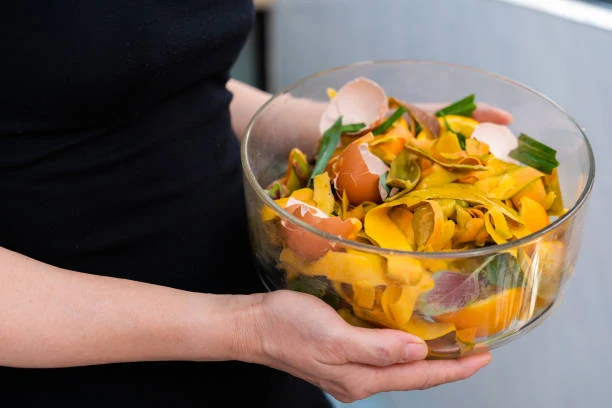Transform Your Kitchen Scraps into Garden Treasure: A Simple Guide to Composting at Home-plantify
If you're passionate about gardening and sustainability, then composting is one of the most rewarding habits you can adopt. Not only does it help reduce household waste, it also creates a rich, natural fertilizer that boosts plant growth and improves soil health. Whether you're an urban gardener with a small balcony or a backyard enthusiast with rows of vegetables, composting made easy can transform your garden into a flourishing paradise.
In this post, we’ll walk you through simple steps to start composting at home, highlight key benefits, and share expert tips to keep your compost pile healthy and odor-free.
Why Compost? The Benefits of Turning Waste into Wealth
Before diving into the "how," let’s explore the "why." Here are just a few reasons why composting should be part of every green thumb’s routine:
- Reduces landfill waste : Over 30% of household trash consists of food scraps and yard waste.
- Enriches soil naturally : Compost adds essential nutrients like nitrogen, potassium, and phosphorus without synthetic chemicals.
- Improves soil structure : It helps sandy soils retain moisture and loosens heavy clay soils.
- Supports sustainable gardening : Reduce your carbon footprint and contribute to a greener planet.
- Saves money : Eliminate the need for expensive fertilizers and soil amendments.
Ready to get started? Let’s dive into the basics of composting made easy.
Step-by-Step Guide to Starting Your Compost Pile
1. Choose the Right Location
Select a dry, shady spot near a water source for your compost bin or pile. If you live in an apartment, consider a small compost bin or a worm composting (vermicomposting) system indoors.
🌱 Pro tip: Want to build your own compost bin? Check out our DIY guide on building a backyard compost bin .
2. Know What to Compost
Balance is key when adding materials to your compost. Think “greens” and “browns”:
- Greens (Nitrogen-rich): Vegetable peels, coffee grounds, fruit scraps, fresh grass clippings.
- Browns (Carbon-rich): Dry leaves, shredded paper, cardboard, straw, eggshells.
Avoid:
- Meat, dairy, oily foods (attract pests)
- Pet waste (can carry pathogens)
3. Layer and Mix
Start with a layer of browns, then add greens. Keep mixing regularly to aerate the pile and speed up decomposition.
4. Maintain Moisture and Airflow
Your compost should feel like a wrung-out sponge — moist but not soggy. Turn the pile every few weeks using a pitchfork or compost aerator to introduce oxygen and prevent odors.
Speed Up the Process with These Tips
Want faster results? Try these advanced techniques:
- Chop or shred ingredients before adding them to the pile.
- Add a compost accelerator or finished compost to kickstart microbial activity.
- Use a tumbler-style compost bin for faster turning and better insulation.
🔁 Looking for the best compost bins? Explore our top picks at best compost bins for home use .
How Long Does Composting Take?
Depending on your method and maintenance, compost can be ready in as little as two months (with hot composting) or up to six months (cold composting). When it turns dark brown, crumbly, and smells earthy, it's done!
Using Compost in Your Garden
Now that you’ve created your own garden gold , here’s how to put it to good use:
- Mix into garden beds : Blend compost into planting holes or spread it over existing beds.
- Make compost tea : Steep compost in water for a liquid fertilizer boost.
- Use as mulch : Spread a thick layer around plants to suppress weeds and retain moisture.
- Potting mix additive : Combine compost with potting soil for container gardening.
🪴 Need more ideas? Discover how compost can enhance your vegetable garden with our guide on organic gardening tips .
Common Composting Mistakes (and How to Avoid Them)
Even seasoned gardeners make missteps. Here are some common issues and fixes:
Expand Your Sustainable Gardening Practices
Composting is just one piece of the puzzle when it comes to growing a self-sustaining garden. Pair it with other eco-friendly practices like:
- Rainwater harvesting
- Native plant selection
- Organic pest control
- Mulching and crop rotation
🌍 For more inspiration, visit our page on sustainable gardening practices and learn how to create a balanced ecosystem in your own backyard.
External Resources for Composting Enthusiasts
To deepen your knowledge and stay updated on best practices, check out these trusted resources:
Final Thoughts: Start Small, Grow Big
You don’t need a lot of space or fancy tools to start composting. With just a bit of time and effort, you can transform your kitchen scraps into black gold for your garden. Embrace composting as a daily habit, and watch your garden thrive while doing your part for the planet.
So, what are you waiting for? Get composting today — your garden will thank you!






